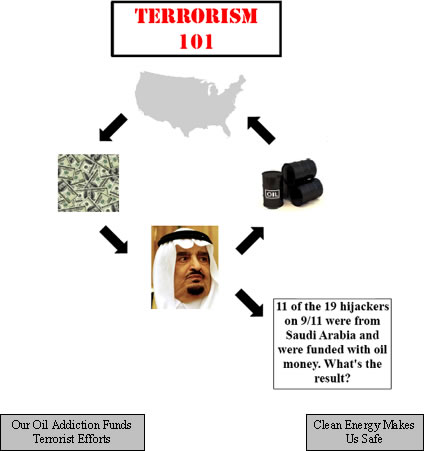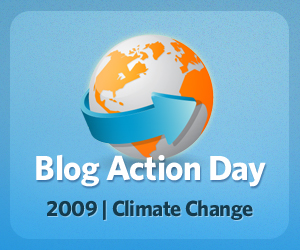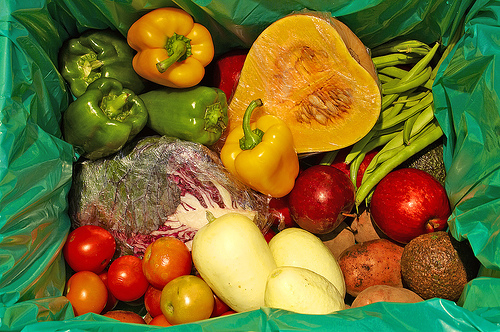Finally, Global warming is getting some international recognition. Since the Kyoto Protocol is about to expire in 2012, the UN, with help of the Danish government, is organizing an international summit about global warming. The summit will be held on December 7th through the 18th at the Bella Center, the largest fair and conference center in Copenhagen, Denmark.
the UN, with help of the Danish government, is organizing an international summit about global warming. The summit will be held on December 7th through the 18th at the Bella Center, the largest fair and conference center in Copenhagen, Denmark.
The Participants:
The main participants will be the United States, China, India(biggest world polluters) and a bloc of 27 countries of the Europian Union. But overall, there will be more than 190 countries that will be a part of this summit. Many of these countries already have been working on cutting or constraining the grow of ththeir emissions, while some refuse to make any commitments. However, though the summit hasn’t taken place yet, 11 countries that are vulnerable to climate change have dedicated 1.5% of their gross national product for climate change actions. Those countries are Bangladesh, Barbados, Bhutan, Ghana, Kenya, Kiribati, the Maldives, Nepal, Rwanda, Tanzania and Vietnam.
“We are not responsible for the hundreds of years of carbon emissions, which are cooking the planet[…]But the dangers climate change poses to our countries means that this crisis can no longer be considered somebody else’s problem.” said Mohamed Nasheed, the President of the Maldives who was a leading voice in the Climate Vulnerable Forum.
The Task:
The general set goal for the summit is to keep the increasing temperature of the globe below 2C (3.6F). That will happen through the many proposals of the participating countries. Cutting Carbon commission is a major one. Some of the European countries have agreed on cutting greenhouse emissions by 20% by 2020, the set date for these commitments. The United State’s climate change plans call for 17 percent less emissions by 2020 and by 83 percent by 2050. Janos Pasztor, climate adviser to U.N, however, told news agencies that Secretary-General Ban Ki-moon “”has consulted with a number of heads of state and so far the general feeling seems to be that we should try to complete the job earlier than later.” This has been part of what triggered the White House to consider other options (International agreement) that can be more efficient and faster but cover a shorter term, this is also because of the concern that Congress will fail to pass a climate change legislation this year. Unfortunately, world leaders have decided not to agree on ”Global pact” for climate change action in the Copenhagen summit but rather to come up with a “politically binding” agreement that will set the guidelines for a future pact in a possible forthcoming conference in Mexico City. This does nothing but postpone actions to deal with a urgent and a concerning phenomena such as our man-made-climate change. The postponement is due to recent assessment by the participants of the summit “that it is unrealistic to expect a full internationally, legally binding agreement could be negotiated between now and Copenhagen, which starts in 22 days,” said Michael Froman, the deputy national security adviser for international economic affairs.
In the summit, there will be plans for developed countries to help the developing countries to cut on their emissions through renewable energy sources.
The initiatives also include “measures such as building sea defenses, securing fresh water supplies and developing new crop varieties” as BBC reports.
What The People Are Doing
While the world leaders are set to meet to come up with an agreement to deal with climate change, the media reports that the number of people who believe there is a global warming is declining, much less believe it is caused by human activities.
This is the time to be concerned about our health and the environment. Scientist have said that you don’t have to be an environmentalist to care about the issue because global warming will affect a major element of our lives, the economy.
It will be some time until we will see an effective treatment for climate change but YOU can start Now. Some are doing the Climate Justice Fast, a demonstration to the world to show the need for an urgent action and also ” to inspire those who are already aware of climate change to become more politically active.” Others are holding debates about the issues to be discussed in the Summit. Some have come up with twelve-steps programs for America to become green. You don’t have to fast or go win a debate about climate change, you can even by as simple an action as turning off the light you don’t need.
You also can participate in:
- Hopenhagen Ambassador Contest: A contest by the Huffington Post that will award the winner a trip to Copenhagen to attend the summit.
- Cast your vote in the Angry Mermaid Award and help decide which company or lobby group is doing the most to sabotage effective action on climate change.
###
By promoting cleaner energy, cleaner government, cleaner cars, and cleaner air for all Texans, we hope to provide for a healthy place to live and prosper. We are Public Citizen Texas.



 Tomorrow – October 24, 2009 – will be the largest day of climate action in the history of the world, and something you don’t want to miss. If you do not yet have anything planned for
Tomorrow – October 24, 2009 – will be the largest day of climate action in the history of the world, and something you don’t want to miss. If you do not yet have anything planned for  If you will be in Houston tomorrow, come join Public Citizen’s Andy Wilson and pastor Brian McLaren at Texas Impact’s
If you will be in Houston tomorrow, come join Public Citizen’s Andy Wilson and pastor Brian McLaren at Texas Impact’s 
 It is blog action day! In case you don’t know, on this day, 15th of October of every year, bloggers from all over the world unite in writing about a common important issue. It started in 2007 by Collis & Cyan Ta’eed. Their first year, they recruited as many as 20,000 bloggers to write about the same issue which was the Environment for that year. It was a great success.
It is blog action day! In case you don’t know, on this day, 15th of October of every year, bloggers from all over the world unite in writing about a common important issue. It started in 2007 by Collis & Cyan Ta’eed. Their first year, they recruited as many as 20,000 bloggers to write about the same issue which was the Environment for that year. It was a great success. Do you ever find yourself in the grocery store stuck in a moment of indecision? Should you go with the $2 conventionally grown – flawless enough to win a beauty contest – cantaloupe, or the $4 smaller, uglier, but organic one; a regular tube of toothpaste for $3.50 or the organic brand that costs double the price for half the amount; Wolaver’s sustainably produced organic beer for $9, or good old Lone Star for half the price? The marketplace sure doesn’t make it easy on our wallets to do the earth-friendly thing – that’s for sure.
Do you ever find yourself in the grocery store stuck in a moment of indecision? Should you go with the $2 conventionally grown – flawless enough to win a beauty contest – cantaloupe, or the $4 smaller, uglier, but organic one; a regular tube of toothpaste for $3.50 or the organic brand that costs double the price for half the amount; Wolaver’s sustainably produced organic beer for $9, or good old Lone Star for half the price? The marketplace sure doesn’t make it easy on our wallets to do the earth-friendly thing – that’s for sure. Roger Duncan announced his retirement today. Although it is sad to see a dedicated public servant move on, Public Citizen congratulates him on a fine career as general manager of Austin Energy, a municipal power company.
Roger Duncan announced his retirement today. Although it is sad to see a dedicated public servant move on, Public Citizen congratulates him on a fine career as general manager of Austin Energy, a municipal power company.

